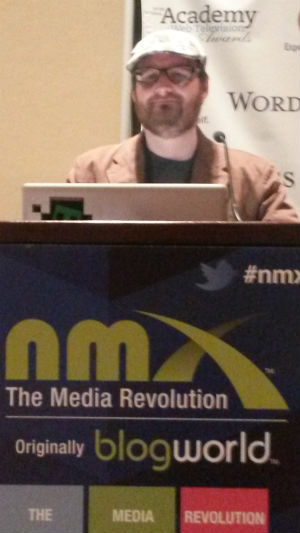 I use Google more times a day than I should ever admit. I look for restaurants, gas stations, and other businesses around me. I use it for directions, looking up people or places, and occasionally for spelling if I just can’t seem to get that word right. My point is: I expect Google to have the information I want and present it in a way that I can consume at a glance or on-the-go.
I use Google more times a day than I should ever admit. I look for restaurants, gas stations, and other businesses around me. I use it for directions, looking up people or places, and occasionally for spelling if I just can’t seem to get that word right. My point is: I expect Google to have the information I want and present it in a way that I can consume at a glance or on-the-go.
Google must think there are others like me because the way they display their results is constantly and dynamically changing to provide more relevant, meaningful information in SERPs. Things like carousels for local results, image and video results, and authorship markup are helping searches find what they wanted, even if they didn’t know it.
Schema.org markup can be implemented on websites to help search engines like Google gain a stronger understanding of a page’s content, and create those rich snippets we finicky and busy searchers find so useful.
Schema can also be leveraged in the blogging arena. However, it can be hard to know how to explain schema, what types there are, and how to implement. Throw Google+ into the mix and you’re likely to get a tad overwhelmed. Mitch Canter, a veteran front-end developer and WordPress programmer, explained it all during his NMX session.
Why Structured Data is Important
As content creators we are always told we have to write for humans and robots—those crawlers and analytics machines that read and rank our site. We strive to create a balance between the two, but more often than not our content is geared more towards one than the other.
The problem is: search engines aren’t humans—they’re not thinking, they’re processing. As a result, sometimes they can get confused. They might even index your content for something you never even intended it to. That brings your website traffic that has no value.
In order to solve that conundrum you have two options:
- Optimize. But the overkill kind that involves keyword stuffing. Robots used to like this, but humans become alienated and quit reading.
- Structure. Structuring is not just how your content is written, it’s in the actual development process and code and a few other elements that help search engines know what the page is about without alienating readers.
What is Schema?
There are several textbook definitions of schema that are mostly very technical and hard to understand. Canter boils it down to: taking human-readable content and taking out the inference layer for the search engines so all they have to do is process the information. They don’t have to guess, they can just look and know what’s going on.
Essentially, schema takes human-readable content and changes it into search-engine readable content using microdata. (Microdata is an HTML5 specification that allows machine-readable data to be embedded in HTML documents).
How is Schema Implemented?
1). Define the format. This involves some coding which Canter says, “A lot of people look at like guys look at shoe shopping.” Coding can be a difficult thing to wrap your head around, but it’s not as overwhelming as you think. You’ll have to insert a few things into the code on your page:
- itemscope: this tells the search engines/robots that this group is an item. An item, for all intents and purposes, is a collection of all the data we want to use. This element of code will be added to the HTML tag that encloses information about the item.
- itemtype: you’ve indicated that your page has an item with the itemscope code, but now you have to specify what kind of an item it is. You can do so by using the itemtype attribute directly after the itemscope.
2). Assign properties. First you’ll have to define some of the properties you’ll want to name. Think of a movie for example: there are actors, directors, reviews, ratings and more. All of those things show up differently in search, so it’s important to distinguish what kind of content you have. You’ll be using itemprops—an attribute that labels the properties of the content—throughout. A few of the elements you can insert itemprops for include:
- Permalink to the Title: this indicates where other people will go to view the blog post. It’s the URL, but we’re telling Google this is where people are going to go to see this content.
- Author Information: you want to define the author by linking to their Google+ profile. This will tell Google who wrote the content, and give your authors some credibility and recognition in search.
- Date Published: this lets Google knows when your content was published.
- Keywords: this can be your categories or your tags, depending on which you use most to indicate what the content is mainly about.
What are the Types of Schema?
There are several different kinds of schema that you can implement depending on what kind of content you’re creating. Canter covered several during his session and clarified a few things that fall in each category:
- Article: things like news articles or investigative reports fall under this category. Blog posts can fit in here, but there is a specific blog post schema that has come out.
- Review: a review of things like restaurants, movies, stores, books etc.
- Event: an event happening at a certain time in a certain location.
- Person: a person (living dead, undead or fictional) – a definition we all found funny.
- Embeddable Objects: video, audio, images or anything else that is non-text.
- Creative: books, movies, recipes or other creative works.
- Product: anything you are selling or offering. You can break it down to SKU, weight, width, and several other aspects of tangible products.
These can be nested—so you can have a review inside a blog post, or a person inside an event. They also happen to be program agnostic making the possibilities endless!
Is There a Plugin for Schema?
There are a few schema plugins that you can install on your site or blog to help out with some of these technicalities. Schema Creator was mentioned by an audience member. However, if you use a plugin you are constrained to only what the plug in can do, so it does have the potential to limit the possibilities.
Canter offers some advice from a past math teacher, “Learn to do it by hand, then use the technology.”
Why Bother with Google+?
You worked really hard to create all of this content, and implement your schema. So why should you bother with Google+? Among other reasons, you can claim your Google Authorship which helps let Google know you own that content, and make a two-way connection between content, your Google+ profile, and your website.
In addition, you get a Rich-Text Snippet. Things like your avatar will appear next to your authored content in SERPs.
How to Set Up Authorship
- Verify your email
- Link to your Google+ profile to your website
- Link your website to your Google+ profile: this helps create the two-way connection between your profile and your website
Schema is a very technical concept and is new enough that not everyone has heard of it and only a handful have actually implemented it. It allows us to do what we do best—writing content that our human readers can infer things from and think critically on, and still dumbs it down for the search engines. Schema lets you have the best of both worlds without having to keyword stuff.


